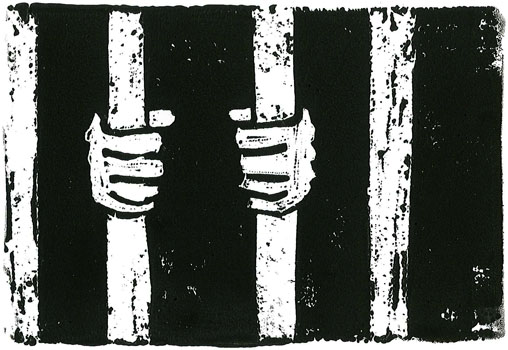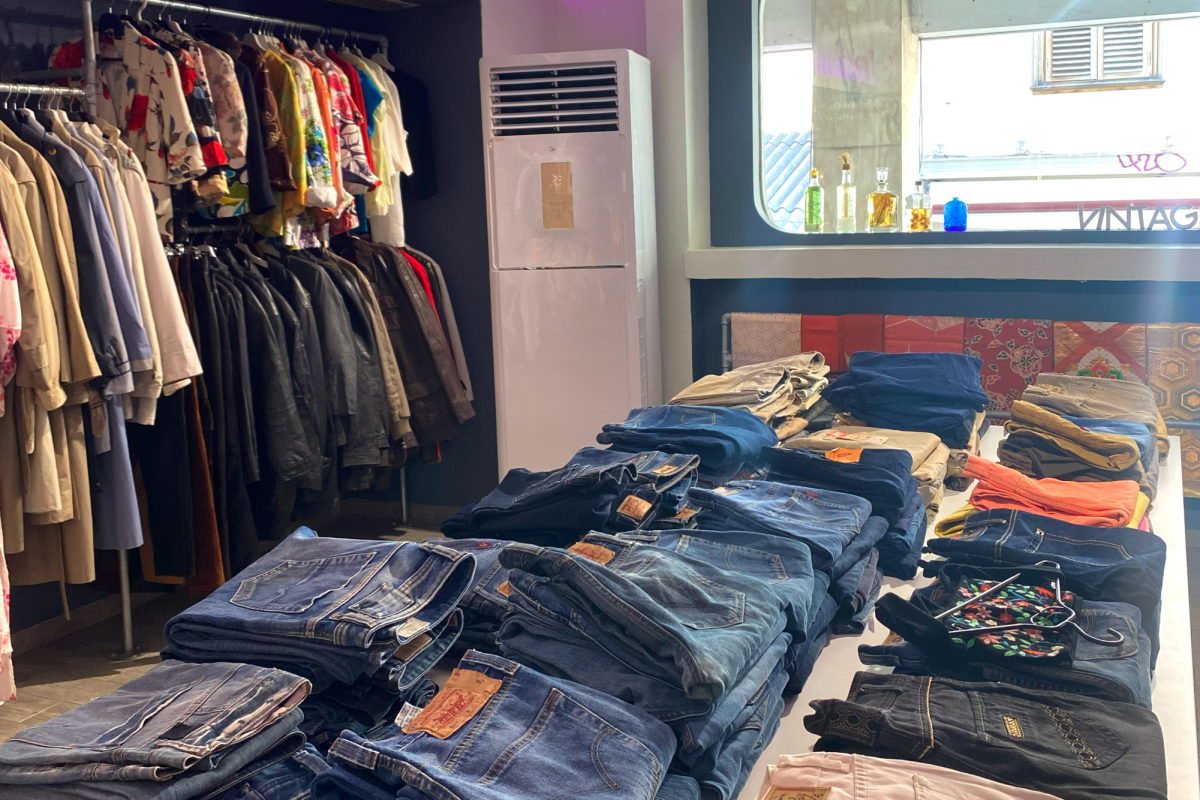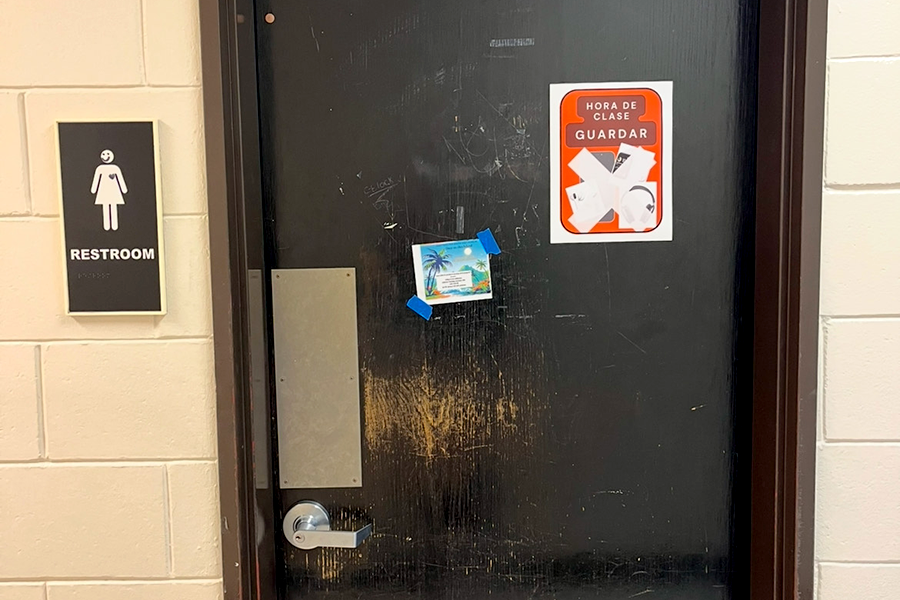Fear is an emotion that nearly every human being has experienced. For many, feelings of fear are often short lived, as they are either conquered or pass by over time. But for South student Mike, not his real name, living in fear is far from temporary. “I don’t see myself living past the age of twenty,” stated Mike, who has now been involved in dangerous gang activity since the age of fourteen.
Originally influenced by gang involvement in his family, Mike is currently a foot soldier, which is the lowest rank within the gang. Mike explained that the primary role of a foot soldier is to pledge your allegiance to the gang by making yourself recognizable. Foot soldiers are often also involved in the selling of drugs. “They have to trust me,” continued Mike, “It’s the gang over everybody.”
Officer Adam Lepinski works for the Minneapolis Police Department, specifically as a member of the Gang Enforcement Team, whose goal is to put a stop to gang violence in Minneapolis.
“Overall we investigate crimes committed by gang members,” said Lepinski, who explained that tracking down gang activity is usually done through proactive and reactive investigations. Proactive investigations typically take place in order to prevent future incidents or violence, where reactive investigations focus on incidents that have already occurred.
“As a whole, the city has seen a decline in gang violence,” stated Officer James Loveland, who works along-side Lepinski at South as a liaison officer. Loveland attributed this decline to “less organization within the gangs,” along with the relentless work of the police and involvement within the community.
Although gang violence is rarely seen at South, signs of gang affiliation are still present. “Obvious signs in the community are tagging,” said Loveland, which he explained is removed as soon as possible.
“Gang graffitti in the bathrooms,” is a sign Lepinski said he has seen at South, as well as the drawing of gang symbols in notebooks.
“I’m not here specifically because there’s a gang problem,” explained Lepinski, who occasionally works off-duty at South. South High principal Cecilia Saddler said that it’s important, “to pay attention to anything that may send a negative message against the kind of environment we are trying to create.”
Gang members also find ways to represent themselves by the clothing they choose to wear, as they can identify themselves by certain shirts, hats, or even shoelaces. “Always wearing the same colors can be a sign of possible gang affiliation,” stated Lepinski, adding that even cocking a hat a certain way can be a possible indicator.
According to the National Youth Gang Survey distributed in 2008, 41% of gang members were recorded to be under the age of eighteen.
When a student does not receive adequate care or attention in their life at home, Lepinski explained that joining a gang can often foster a “sense of belonging.”
“I feel that I’m wanted,” explained Mike, “sometimes in a bad way.”
For many juvenile gang members the decision to become involved is almost expected, as Lepinski shared that some families are second or even third generations of a particular gang.
“You are pretty much destined to be in that gang,” said Lepinski about the youth growing up in these families, “the kids don’t get to make their own decision.”
It’s not difficult to see why gangs have picked up such a high percentage of juveniles in the past few years, considering that the media does not shy away from glorifying the usage of guns and participating in violent behavior.
“Gangs are really glamorized in the media,” said Lepinski, adding that rap music often promotes gang-like behavior.
“I thought it was cool,” explained Mike, who has now realized that the violent and hazardous life of a gang member is far from glamorous. “It’s a nightmare once I leave school.”
As a lower ranked member in the gang Mike said, “If people need me I have to be there.” Although he has yet to be asked, Mike explained, “If I get an order to go beat up a person, with no hesitation I have to go do it.”
“You have to know who you’re around,” stated Mike, further explaining that he tries to avoid contact with people who have potential to be from another gang.
“I wasn’t going to take no chances,” explained Mike as he recounted an event in which he noticed an unfamiliar man watching him. The event soon ended in a confrontation, leaving Mike with a new realization of a dangerous path he didn’t wish to take.
“Having his death on my hands would be too much to handle,” shared Mike. While the incident did not result in any fatalities, it was enough to put the harsh realities of the gang into perspective.
Once a member, leaving the gang is not only extremely challenging, but also at times life threatening. “Once you’re on that road it’s hard to turn back,” said Lepinski.
“I’ve tried to leave them,” said Mike, his attempt unsuccessful. Although Mike has dreamed of leaving, he explained that leaving town is one of the only options to safely escape the gang. As a result of his attempt to leave Mike has since been accused of being a “snitch,” and explained that not only does this break trust within the gang, but “everyone is out for you.”
“These are the people you know, the people you feel comfortable with,” said Lepinski about the relationships built through gangs. These relationships, although often negative, can be very difficult to sacrifice, as Lepinski added that its not much different than “turning your back on your friends.”
Although the gang lifestyle is not easy to run from, creating a better situation is always possible. “Nothing is off the table when it comes to conflict resolution,” said Loveland, adding that, “South has excellent resources for dealing with these situations.”
“It’s a problem-solving conversation,” Saddler explained in regard to assisting students who are involved in gangs. “We work through creating a safe conversation with an adult who can help problem-solve.”
Through individual mentoring and counseling, Saddler explained that the conversation does not focus on the consequences of being involved, but rather “what are the next steps” needed to take in order to improve the situation. “People are willing to listen to people about their problems,” added Mike about the support offered at South.
Saddler simply stated that in terms of the vast support offered within the school, “here’s what we have, and our doors are open.”
Saddler explained that South is open to students over an hour before classes begin, and they continue to stay open after school. “The students want a school where they feel welcome,” said Saddler, adding that South strives to create opportunities for students to become involved in new activities.
Saddler added that the Corcoran Neighborhood Organization, along with other park and recreation centers act as open facilities for students to go to. “They want to do more for youth,” said Saddler.
“Together, we’ve created an environment that’s non-conducive to gang activity,” said Loveland, who believes that a lot of students take part in the various positive activities South offers. Saddler explained that one goal while creating activities and opportunities is to make sure they are something “that all students would want to be involved in.”
Despite all the options offered for these students trapped in gang activity, school itself has been a challenge for Mike to handle. “It’s always on my mind, to the point where I can’t think about school. I fail.”
“Education is the easiest way to create a life for yourself,” explained Saddler, “you’re going to learn something, you’re going to make connections.” One of the largest opportunities students are unaware of are the number of scholarships that go unclaimed. “There are opportunities out there,” added Saddler, “we are going to help you.”
Even though school work has proven to be a challenge for Mike at South, he explained that going to any other school “would be a totally different situation.” Mike added, “South has a zero tolerance for gang violence,” which is a major factor to why he has never sold drugs or engaged in violence at school.
For the majority of the time, Mike has felt safe while at South. “When I’m inside my classes I don’t have to worry about nobody,” said Mike. While at school Mike added that he does not have to worry as much about the outside problems he is constantly faced with.
Although he feels that South is for the most part accepting, Mike said, “I don’t think anyone really understands. They don’t understand where I’m coming from.” Mike explained that he often feels labeled by other students, “as a person that’s unsafe to be around.”
“I’m a pretty nice guy,” said Mike, “at least I like to think I am.”
Mike does feel that he possesses several positive qualities that are often overlooked. “I’m willing to listen,” explained Mike, “and there when you need me.”
“I don’t want my kids looking at me like that,” said Mike, referring to the impact his gang involvement would have on a future family. “Stay away from it, as far as possible,” added Mike, “It’s not cool.”
In terms of the future, Mike explained that though he doubts he will get the chance, he hopes that one day he could start his own business, or possibly become a therapist. “I like to help people,” Mike added.
But if anything Mike desires one thing above the rest, “I don’t want to live in fear.”







